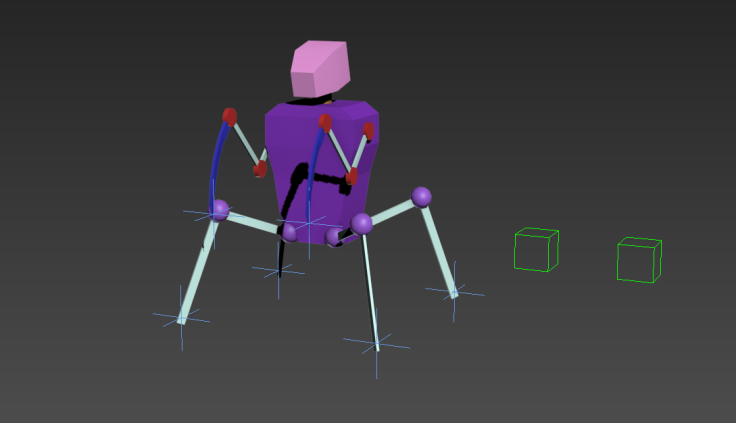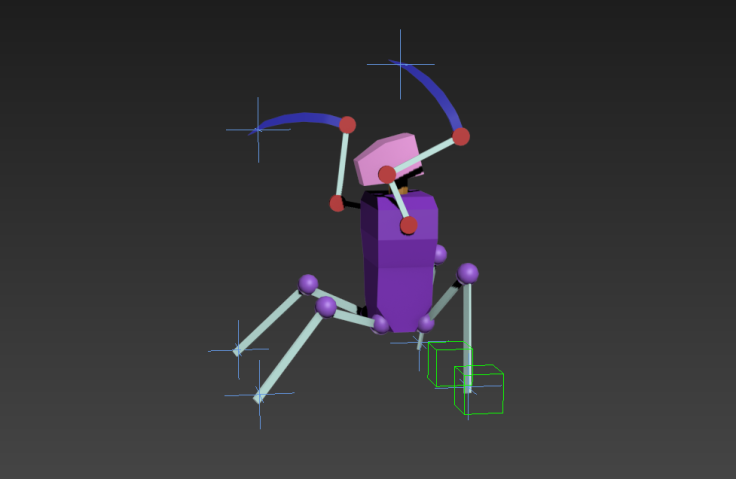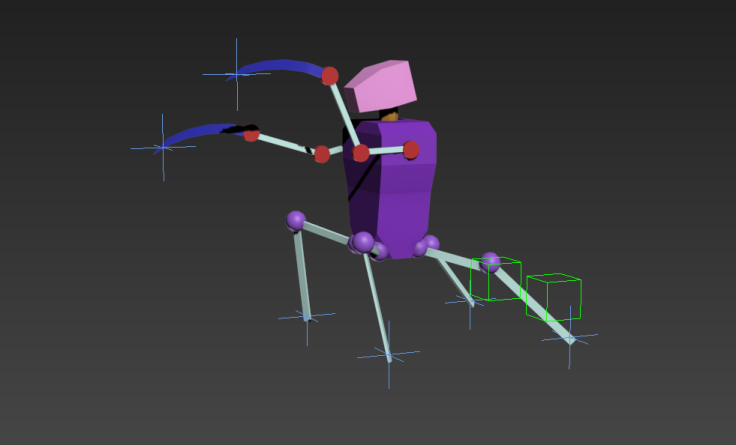Final Idea
Reflection on focus group feedback:
For this task I was part of a focus group and discussed my three main ideas, by doing this I received feedback and constructive criticism about them. For the robot character idea it was suggested that I do research into texturing, in particular emissive materials. I need to work on my ability to create textures so that they are of a good quality. Time management was brought up as a consideration, but the amount of research and experimentation I have conducted makes this less of a problem. For the fantasy interior there are several important considerations, such as time management, the amount of models in the space and the size of the space. I should avoid making too complex of a room given the amount of time I have available. The last idea was the spaceship, for this I would have to consider if the cockpit can be seen from the outside or if the glass is opaque. I also need to consider emissives and keeping the model relatively simplistic.
Selection of final idea:
The idea I have chosen to be my final idea is the rigged robot character, this is because I have done the most research into it and I have the most interest in it. It also seems like the most realistic project due to the experimentation I have done with modelling and rigging, though I still need to do more work on creating textures. Another reason I chose this idea is because the feedback I received suggested that it was the most realistic idea given the time I have.
Identification of relevant job roles:
The job role that I would be doing could be considered the 3D Artist, the 3D Character Artist or the 3D Animator. Another role involved is the texture creator which requires skills with 2D art, I will also be doing this role which is often included in the role of 3D Artist. An important role I would rely on is the concept artist as they would develop the art for the character, I would heavily rely on this when developing the 3D model.
Consideration of strengths, weaknesses, opportunities and threats:
For my project I must consider strengths, weaknesses, opportunities and threats. Strengths would include the small number of models I would need to create, an interior may have many small models but the robot would have a set number of main pieces. Another strength is the experimentation I have done in advance, I have a strong outline of what I need to do and I have been practicing the required skills, such as modelling and rigging. One weakness would be the texturing, if I don’t create textures of a high enough quality to reflect what I want the model to look like then it could end up unappealing, though this is dependent in part on whether I go for a stylised look or if I aim to create realistic textures. This project presents an opportunity to develop my skills, for instance I need to practice creating textures for models. Through this project I hope to practice these skills and develop my weaker skills. The main threat to my project is time, I have tried to prepare in advance to reduce how problematic time will be but I must still work efficiently to meet the deadline.
Action plan:
The first stage of my action plan will be to work on creating textures, I have practiced all the other aspects which go into the final piece and must work on this as it is one of my weaknesses. After improving my texturing skills I will work on creating concepts, though due to my lack of artistic skill this may be more technical, for example what dimensions each piece will be, along with a side view and what colours and materials they will be.
Research task 1:
Why is it important? What do I hope to learn from it?
For this first research task I will create a mind map about sources of inspiration for each aspect of my character. For instance I will find various examples of helmets which look similar to what I want for the robot’s head. Creating this mind map is important as I will be using these inspirations to help develop my project. I hope to gather a variety of inspirations which will help me learn what I want my final piece to look like and which of my inspirations don’t fit with the rest, knowing this will allow me to focus on a single design. It will also be useful as it is a collection of ideas, it will prevent me from forgetting inspirations and can be used throughout the project. This will also allow me to consider in-depth all of the aspects of the model and realise if I have not paid enough attention to a particular aspect of the model.
Identify sources and whether the research is primary or secondary.
My research will be secondary research as it is a collection of characters and designs which I will use as reference material. I will use the internet to research and source images which represent what I want the robot to be inspired by. The images I used have been referenced at the bottom of this post.
Conduct the research.
Here is the Mind map I created:

Reflection. What I learnt and how it will help me.
By doing this task I both summarised previous inspirations and researched new inspirations for each aspect of my model. One of the purposes of doing this task was to help me consider each aspect of the model in detail and realise which parts require more consideration. The task also serves as a reference which I will use throughout this project when I’m working on any of these aspects of the project.
Research task 2:
Why is it important? What do I hope to learn from it?
For this research task I will be prototyping by creating a very basic, untextured model which is structured similarly to how I want my final design to be structured. I will then add bones and rig the model, testing out basic movement, dummy helpers and IK Solvers. This task will be useful in regards to practicing rigging and movement, it will also help give me a good idea of dimensions and how large I want each aspect of the model to be.
Identify sources and whether the research is primary or secondary.
This task is primary research as it is prototyping for the final model, the task will not rely on any information sources as it is focused on ability and experimentation rather than information.
Conduct the research.
Here are some screenshots of the finished prototype, in the second picture I have shown only the bones of the model, in the third and fourth pictures I have posed the model to show how the model can be manipulated.




Reflection. What I learnt and how it will help me.
Creating this prototype was useful for many reasons, for one it was useful as practice for adding bones and using the skin modifier. It was also useful as I could recognise things I could have done better afterwards, for instance I named all of the bones based on where they were, however a few required more specific names to help me when applying the skin modifier. It also made me consider more about how the joints will need to be made for the real model. Overall this task was very valuable to me and going through this process will help me a lot when I create the final model and rig it.
Research task 3:
Why is it important? What do I hope to learn from it?
For this research task I will be experimenting with textures, in particular a metallic texture with a specular map. I will be doing this task to improve my texturing skills as well as to gain familiarity with the types of textures which will be required for my final project.
Identify sources and whether the research is primary or secondary.
This task will be primary research and will not have any sources as it will be me experimenting in Photoshop and applying the end result to simple models in 3DS Max.
Conduct the research.
Here is a screenshot of the textured model, the orange part represents what I would like to have glowing. In the future I will probably come back to this model and try applying a glowing material to the orange section.

Reflection. What I learnt and how it will help me.
Though doing this I gained experience creating and applying textures, I learnt more about how to create specular maps and how to create metallic diffuse maps. I researched how to add glow to certain parts of the model but my attempts were not met with success, I will come back to this in the future and try to familiarise myself with adding a glow effect to certain parts of a model. Through doing all this I learnt more about texturing and map types, I also began looking into glow effects for models.
Research task 4:
Why is it important? What do I hope to learn from it?
For this task I decided to create e prototype for the robot’s head, I based it off of several of the inpsirations from the mindmap I created previously. This task is important as it allows me to practice creating the model, it also allows me to recognise what I do and don’t like about the model and what I might change later down the line.
Identify sources and whether the research is primary or secondary.
This task is primary research and would have no sources.
Conduct the research.

Reflection. What I learnt and how it will help me.
By doing this task I was able to practice creating the head of my robot, this was also a good opportunity for me to recognise aspects of the model that I didn’t think were fitting. Overall I was happy with the model, though I need to make sure that in the future the other parts of the final model’s body share a similar style with this model.
Research task 5:
Why is it important? What do I hope to learn from it?
For this task I’m going to research Triangle counts of characters in games, I will look at both main characters and basic enemies. This task is important as it gives me a Tri count target to work around when I am creating my model, by doing this task I hope to learn what kind of Tri count I should be aiming for.
Identify sources and whether the research is primary or secondary.
This task will be secondary as I am using the internet to research data about other games. I will look at a list of Tri counts for assets from various games and analyse where my model would fit into the spectrum of Tri counts. I will post my source here and Harvard reference it at the bottom of this post.
Katana. (2013). Triangle counts for assets from various videogames.Available: http://polycount.com/discussion/126662/triangle-counts-for-assets-from-various-videogames. Last accessed 08/05/16.
Conduct the research.
When looking at the Tri counts of other games I have come to the conclusion that in most games characters tend to be somewhere between 5,000 and 30,000 Tris. Main characters of modern games seem to commonly exceed 15,000 Tris, the most complex of which end up between 20,000 and 30,000. In some single player games where the main character is always in focus the model may be more complex, for instance the model of Drake in Uncharted 2 was 37,000 Tris. Very basic enemies seem to be close to 5,000 Tris,such as the Thugs from Batman: Arkham Asylum which are 7,000 Tris. Given that my model is designed to be an enemy of the player it will likely end up at a Tri count of less than 10,000.
Reflection. What I learnt and how it will help me.
By doing this task I’ve gained insight into the Tri counts of various video game assets and I’ve recognised what kind of Tri count I should be aiming for in my project. Due to the fact that my character will be an enemy of the player I will focus on developing a model which has a Tri count of less than 10,000, though I may aim to end up near to that figure without exceeding it.
Research task 6:
Why is it important? What do I hope to learn from it?
For this task I will be researching how quadrupeds move, this will help me when I animate my quadrupedal robot, I will be avoiding creating a walkcycle though I believe this research will still be beneficial as it will help me understand how a quadruped’s body reacts when moving.
Identify sources and whether the research is primary or secondary.
This will be a secondary research task and my sources are these Youtube videos which display or describe the motions of quadrupeds.
Morten Andersen. (2014). Quadruped Walk Cycle. Available: https://www.youtube.com/watch?v=YgoS00icigA. Last accessed 08/05/16.
DarkmaneTheWerewolf. (2011). 4- Legged walk cycle guide. Available: https://www.youtube.com/watch?v=Y5GvEmn_wB4. Last accessed 08/05/16.
Ellen Arnold. (2014). Quadruped Walk Cycle Animation. Available: https://www.youtube.com/watch?v=LfoTYt1L2KQ. Last accessed 08/05/16.
Conduct the research.
I have conducted the research by watching and analysing the movements displayed in these videos. I have learnt several key things through this analysis, for instance when a quadruped is walking the entire body reacts, no part of the body is static. I have also learnt that one way a quadruped’s legs can move is to have the left and right of both leg pairs to alternate, which allows them to align when they cross at the midpoint, the back pair of legs will be slightly desynchronised from the front pair. I have also learnt that the crossover point of the left and right legs is the point where the body connected to those legs lifts the highest.
Reflection. What I learnt and how it will help me.
Through doing this research I have learnt more about the way quadrupeds move and how their body reacts to their movements. This will help me because when I animate my robot I will have to bear these facts in mind otherwise my model will appear unrealistic and without weight.
This week my focus was on conducting research based on my chosen project, when completing this research I focused partially on modelling, texturing and rigging as these are core to the production of my project. I also researched animation and my inspirations as I require an understanding of animation to demonstrate the rigging of the model and knowing my initial inspirations allows me a base concept to build upon in the future. These tasks grant me a better understanding of how realistic completing my project within the time frame is, they also refamiliarise me with the different processes involved which makes the project more straightforward to complete. Overall these research tasks prepare me well for the following stages of my project.
References:
Megacorp Security Robot II – Flamethrower v3.0.Available: http://ratchet.wikia.com/wiki/MSR_II_-_Flamethrower_v3.0. Last accessed 03/05/16.
Combat bot. Available: http://ratchet.wikia.com/wiki/Combat_bot. Last accessed 03/05/16.
Art Andrews. (2010). First Sons – Boba Fett Preproduction #2 Helmet Progeny. Available: http://www.thedentedhelmet.com/f23/first-sons-boba-fett-preproduction-2-helmet-progeny-50903/. Last accessed 03/05/16.
Ultron. Available: http://marvel-movies.wikia.com/wiki/Ultron. Last accessed 03/05/16.
Simon Tomlinson. (2016). First one to blink loses! Available: http://www.dailymail.co.uk/news/article-3406377/First-one-blink-loses-Praying-mantis-engages-five-minute-stand-crocodile-walking-rival.html. Last accessed 03/05/16.
1SR Certified Scythe Instructors. Available: http://onescytherevolution.com/1sr-scythe-instructors.html. Last accessed 03/05/16.
Black Knight Gauntlets. Available: http://darksouls3.wiki.fextralife.com/Black+Knight+Gauntlets. Last accessed 03/05/16.
VAEFLARE. (2014). ANUB’ARAK HERO WEEK. Available: http://us.battle.net/heroes/en/blog/16071432/anubarak-hero-week-9-30-2014. Last accessed 03/05/16.
Megacorp Security Robot II – Flamethrower v2.0. Available: http://ratchet.wikia.com/wiki/Megacorp_Security_Robot_II_-_Flamethrower_v2.0. Last accessed 03/05/16.
Droideka. Available: http://starwars.wikia.com/wiki/Droideka. Last accessed 03/05/16.
Azmodan. Available: http://heroesofthestorm.wikia.com/wiki/Azmodan. Last accessed 03/05/16.
nchlsdmn. (2014). Ratchet’s pilot suits. Available: http://nchlsdmn.tumblr.com/post/94566745941/ratchets-pilot-suits. Last accessed 03/05/16.
Armor. Available: http://ratchet.wikia.com/wiki/Armor. Last accessed 03/05/16.
Megacorp Security Robot I – Chainsaw v2.0. Available: http://ratchet.wikia.com/wiki/Megacorp_Security_Robot_I_-_Chainsaw_v2.0. Last accessed 03/05/16.
Martin Hernandez. (2014). Ironman Torso. Available: https://www.behance.net/gallery/20141881/Ironman-Torso. Last accessed 03/05/16.
Katana. (2013). Triangle counts for assets from various videogames.Available: http://polycount.com/discussion/126662/triangle-counts-for-assets-from-various-videogames. Last accessed 08/05/16.
Morten Andersen. (2014). Quadruped Walk Cycle. Available: https://www.youtube.com/watch?v=YgoS00icigA. Last accessed 08/05/16.
DarkmaneTheWerewolf. (2011). 4- Legged walk cycle guide. Available: https://www.youtube.com/watch?v=Y5GvEmn_wB4. Last accessed 08/05/16.
Ellen Arnold. (2014). Quadruped Walk Cycle Animation. Available: https://www.youtube.com/watch?v=LfoTYt1L2KQ. Last accessed 08/05/16.
Leave a comment